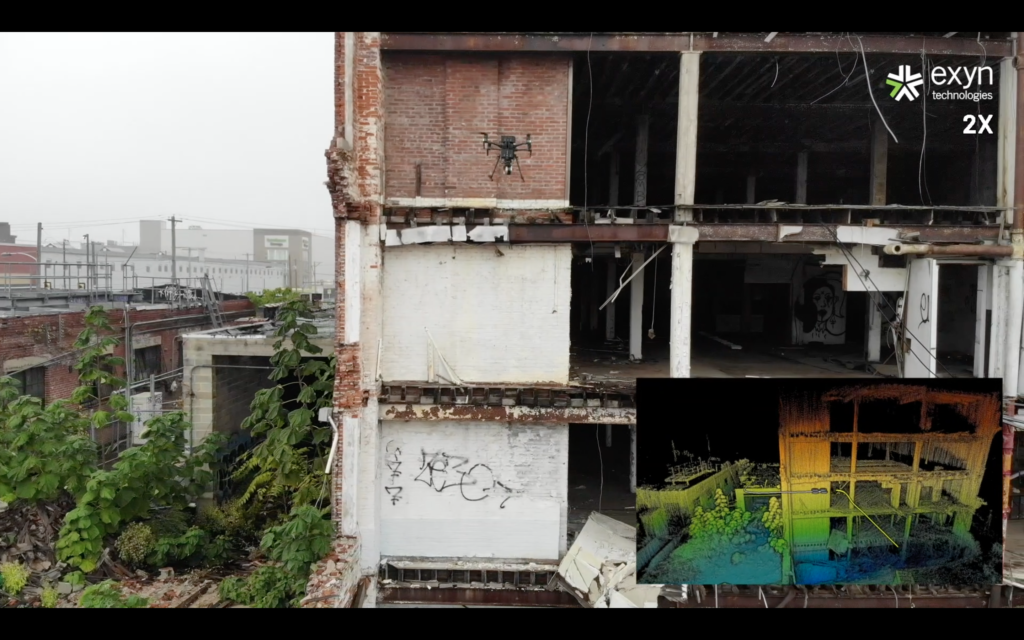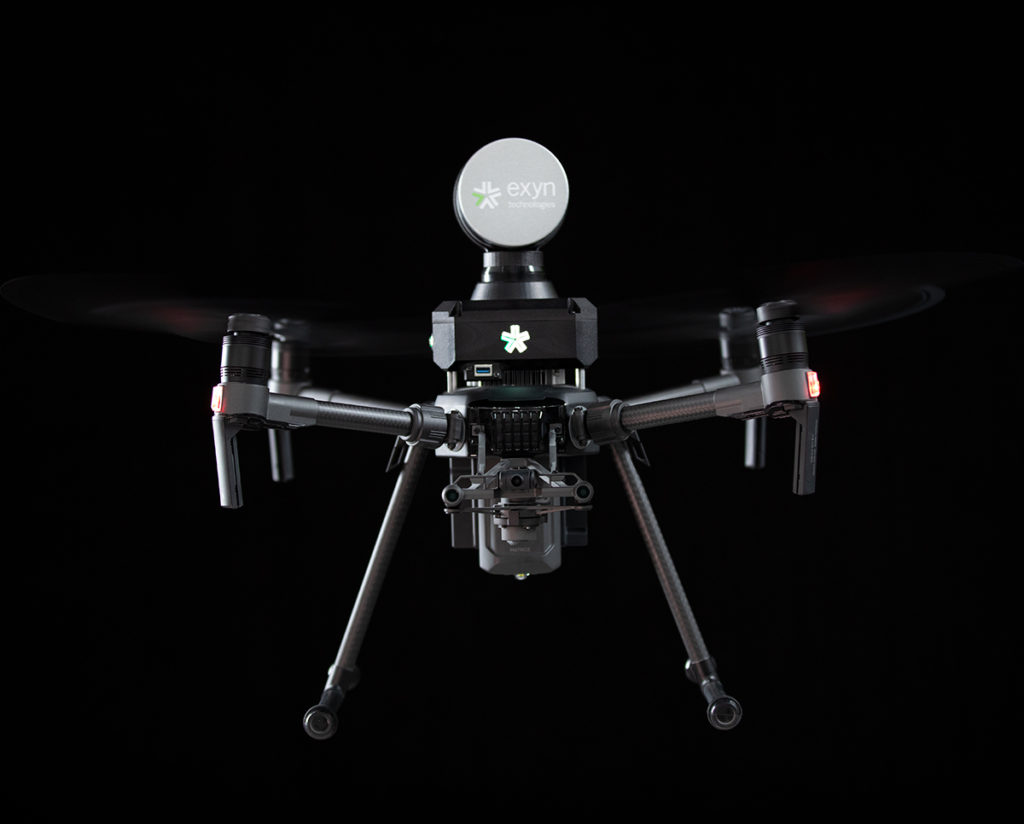In the second part of our two-part series, Nader Elm, Exyn’s CEO, shares how he focuses on growth and plans for transformation in the rapidly shifting autonomous robotics field.
In the first part of our series, we looked at the current state of our startup environment and how we're building a product to compete in the emerging space of autonomous robotics. Since then, our focus has shifted from technology research and product design to product development and manufacturing while exploring new industry verticals and customer channels for continued growth.
What goes into a focus shift of that magnitude? The transition can be a stressful and tenuous one for new startups who might be drinking too much of the kool-aid. Trust me, the first taste of real customer feedback can be more bracing and bitter than initially imagined. And while it's essential to line up potential industries and customers to attract early revenues, it's crucial to leave room and keep your attention ready for the unexpected. Sometimes it simply comes down to serendipity and who walks past your booth!
When we were in our early stages as a startup, we mainly spoke with early adopters who were more comfortable investing in early-stage pilots because they could see the potential ROI. Now that we've demonstrated that our technology is capable of doing what it is supposed to do, the business case is relatively easy to build up — most notably in terms of improved safety, increased productivity, and operational efficiency.
All of this accrues significant benefits for the customer, so we price against that — and it isn’t necessarily cheap. Our customers realize the potential for millions of dollars returned on their investment, whether in terms of actual revenue, operational savings or lives and injuries saved. But it's difficult to stamp a formidable price tag on your product with the promise of substantial returns down the road. We saw the early adoption of electric vehicles struggle with this same issue. Lucky for us, we're not confined to a single vertical.
As we continued to investigate potential industries for autonomous inspection and mapping, we kept thinking back to our supply chain and all of the interconnected pieces that were required to deliver our own products on time. Each link in this chain needed proper monitoring and tracking to keep inventory and shipping on schedule. We’d suffered from issues of supplier lead times and stockouts, as well as inventory overbuild on our side to smooth the supply chain. And seeing as how we’d already flown drones in an old Philadelphia warehouse, mapping both the building itself as well as the inventory within it, we knew aerial robots could be a great solution in logistics and construction!
In highly complex warehouses — think 500 to 1 million square feet with racks going up to about 30, 40, sometimes 50-plus feet — understanding exactly how much product you have and where is a huge problem for logistics operations. The old system of cycle counting exorbitantly expensive, operationally elaborate, and rarely accurate and as a result is done infrequently. This results in a widening gap in accuracy between inventory systems and the “as-is” in the warehouse, leading to stockouts in some areas and associated customer fulfillment and satisfaction issues. In other areas, there will be overstock and associated carry cost, along with “shrinkage” where inventory is either lost or stolen. In total, this amounts to hundreds of billions of dollars of loss and inefficiency every year in the U.S. alone.
But as far as our robot is concerned, an aisle in a warehouse and a tunnel underground look the same. Our autonomous robots can traverse the entire building by itself, scanning barcodes and assigning them a coordinate, which becomes an input for the warehouse management system. By automating the process, it is safer, faster, and more accurate, and you can perform daily cycle counts instead of one every six months.
Another application we're looking to dispatch aerial autonomy to is commercial construction -- an $8 trillion-a-year global industry. A McKinsey study suggested that, of that figure, around $3 trillion is lost to inefficiency and waste. This is mainly due to the complexity of projects, the many constituents involved, and critical issues in collecting and transferring data.
Some companies have launched automated drone systems to build maps of large scale construction projects. All of them focus on the building’s exterior and rely heavily on GPS or elaborate infrastructure such as RTK to create accurate exterior maps. But the overwhelming majority of problems and inefficiencies of a construction project are actually inside the building, so existing solutions only address a minute part of the problem.

We are not in the construction market yet, but we've begun test flights -- sending a robot inside building projects to gather accurate data to feed into construction documentation and building information systems (BIMs) so companies can track and measure progress of the project on a daily basis. They can also identify variances of as-is versus plan and more efficiently manage the handover of activities between trades and contractors.
Since our successful Series A round, we have evaluated our own milestones and efficiency. It's easy to get bogged down with the day-to-day work of startup life, which is why it's important to stop and evaluate old goals with fresh eyes.
With our entry into the first two verticals in mining and logistics, we anticipate an extended runway for the next two years focusing on further commercialization and customer awareness. After establishing customer success in mining, we want to (excuse the pun) dig deeper to newer sensors, gas monitoring, search & rescue, and autonomous flights from the surface.
We've also begun attracting interest from the government and defense industries in our new Scoutonomy mission behavior for autonomous military surveillance and reconnaissance. These aerial robot systems sense and detect their surroundings in real-time to rapidly gather critical information -- including high-fidelity 3D maps and human and object detection -- for superior situational awareness. And they can do it all while keeping a human operator out of harm's way.
Even though we're securing footholds in new industry verticals and making enhancements to our current products, we're now embarking on exploring new adjacent areas where we can apply our unique capabilities. In the startup space, you need to learn the right balance of rigid flexibility -- knowing when to stick to your core mission and when to expand into new areas.
While some startups view these detours as distractions (and they may rightly be just that) they can also sometimes be strategic opportunities waiting to be exploited. Our early days were likely similar to other startups, where product assumptions are often turned on their head by the realities of customer needs. Other times, our assumptions reveal new and highly rewarding new avenues for the company.

As an example, we actually did not purposefully decide to move into mining. We happened to be showcasing our robots’ autonomous capabilities by showing the maps of the warehouse the robots build in real-time (for its own navigation) at robotics conferences. But, by happenstance, some folks from mining companies walked past our booth and were mesmerized by the detailed maps they saw, and here we are!
So what really surprised us was having a great technology with specific assumptions about its possible uses, but unexpectedly finding success in -- and being open to -- a completely different, yet hugely valuable, industry. And beyond simply finding a great fit, we're exceptionally proud to provide a tool that can help drive the technology advancement and productivity of an industry that hasn't changed much over the years and help save lives in the process.
This journey is only just beginning for us. We're constantly upgrading our software for better collision avoidance, higher accuracy mapping, and customer ease-of-use. We're developing our system for multi-robot coordination and moving our autonomy stack to ground-based vehicles. And we're speaking with current and prospective customers about how our solutions could help them decrease downtime and inefficiency, improve business decisions, all the while improving safety for workers.
Keep an eye on our blog and social channels to see more product demonstrations and customer stories in the coming months. And subscribe to our newsletter below to read more about our product and company culture.